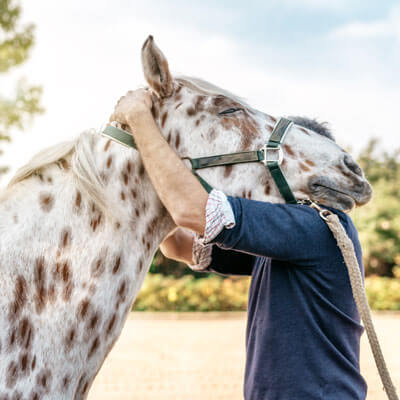 Our animal companions, whether canine or equine, often communicate their needs in subtle ways. While they can’t verbally express discomfort or pain, they do exhibit behaviors and physical signs that can indicate underlying musculoskeletal issues. Recognizing these cues is crucial for ensuring their well-being and addressing any potential problems proactively. In this blog, we’ll explore common signs that your dog or horse may benefit from chiropractic care and how to take action to support their optimal health.
Our animal companions, whether canine or equine, often communicate their needs in subtle ways. While they can’t verbally express discomfort or pain, they do exhibit behaviors and physical signs that can indicate underlying musculoskeletal issues. Recognizing these cues is crucial for ensuring their well-being and addressing any potential problems proactively. In this blog, we’ll explore common signs that your dog or horse may benefit from chiropractic care and how to take action to support their optimal health.
Changes in Gait or Mobility: Observing changes in your pet’s gait or mobility is one of the primary indicators that they may be experiencing musculoskeletal discomfort. For dogs, this could manifest as limping, stiffness, or difficulty rising from a lying position. Horses may show signs such as shortened stride, reluctance to move forward, or stiffness, especially when turning or backing up. Any noticeable alterations in their movement patterns warrant attention and may indicate the need for chiropractic evaluation.
Behavioral Changes: Animals often adapt their behavior in response to pain or discomfort. If your dog or horse displays uncharacteristic behaviors such as irritability, aggression, reluctance to be touched, or avoidance of certain activities, it could be a sign that they’re experiencing discomfort. Dogs may become more withdrawn or less playful, while horses may exhibit resistance during grooming, tacking up, or riding. These behavioral changes may signal underlying musculoskeletal issues that could benefit from chiropractic intervention.
Reduced Performance or Athleticism: For performance animals such as working dogs or competitive horses, changes in performance or athleticism can be indicative of musculoskeletal issues. Dogs may struggle to perform agility tasks, lose interest in retrieving, or show decreased endurance during activities. Similarly, horses may exhibit reluctance or resistance during training sessions, have difficulty maintaining proper form over jumps, or demonstrate decreased speed or stamina. These changes in performance warrant further investigation, as they may be related to biomechanical imbalances that can be addressed through chiropractic care.
Noticeable Postural Abnormalities: Pay attention to your pet’s posture both at rest and during movement. Dogs may display a roached or sway back, a tucked abdomen, or an asymmetrical stance. In horses, common postural abnormalities include a dropped hip, a raised shoulder, or a stiff, rigid posture. These postural irregularities can indicate musculoskeletal imbalances or misalignments that may benefit from chiropractic evaluation and adjustment.
Signs of Pain or Discomfort: While animals may not vocalize pain in the same way humans do, they often exhibit subtle signs of discomfort. Watch for signs such as flinching, muscle tension, sensitivity to touch, or vocalizations during certain movements or activities. Dogs may lick or bite at specific areas, while horses may pin their ears back, swish their tail, or grind their teeth. These signs suggest that your pet may be experiencing pain or discomfort and should prompt further investigation, including consultation with a qualified animal chiropractor.
Contact Us Today
Understanding the subtle cues that indicate musculoskeletal issues in your dog or horse is essential for promoting their overall health and well-being. By recognizing signs such as changes in gait or mobility, behavioral alterations, reduced performance, postural abnormalities, and signs of pain or discomfort, you can take proactive steps to address any underlying issues promptly. Consulting with a qualified animal chiropractor can help assess your pet’s musculoskeletal health and provide targeted care to support their optimal function and vitality for years to come.
CONTACT US
